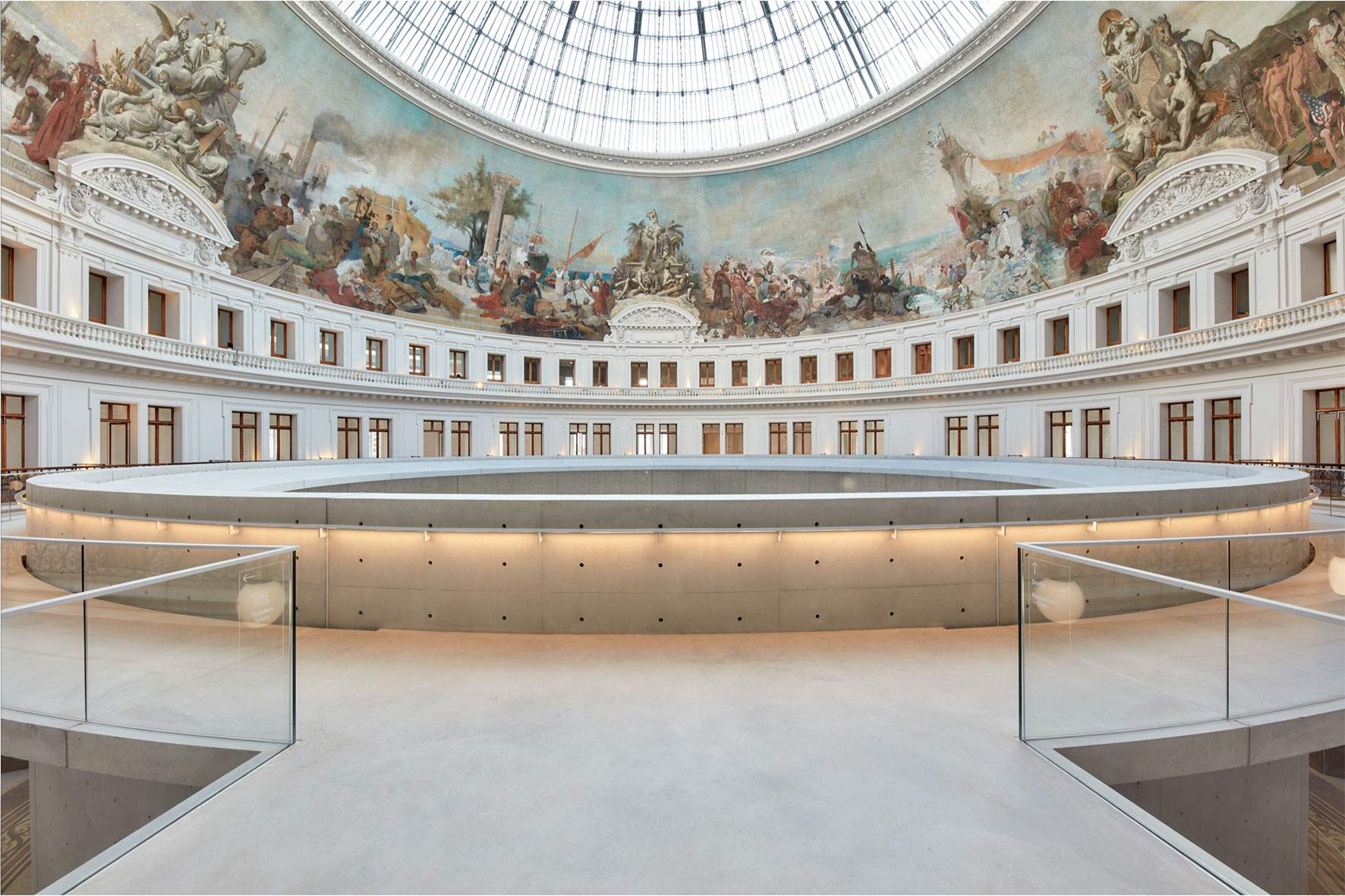A huge museum opens in Paris in a few days: it's the new home of the Pinault Collection
A date set for January 23, 2021-that is the date when, if all goes according to plan, a major new contemporary art museum will see the light of day in Paris, the Bourse de Commerce, the new home of the Collection Pinault. The opening comes after four years of work, during which the grand monument was restored to accommodate the collection.
The history of the Bourse de Commerce begins as early as the 16th century, a time when Catherine de’ Medici’s residence was built on the site where the building stands today (of which the only surviving trace is the so-called Medici Column, an isolated 31-meter-high column): the residence was demolished in the 18th century to make way for the “halle aux blés,” a building dedicated to grain trade, while the current Bourse de Commerce dates instead from 1889 (designed by Henri Blondel). Since 1986 the Bourse has been declared a historic monument, and trading took place there until 1998. The building then became the headquarters of the Paris Chamber of Commerce, underwent some restoration work in 1989 and 1997, and finally, in 2016, the City of Paris and collector François Pinault announced the unveiling of a new project to move part of the French tycoon’s contemporary art collection to the Bourse: the City Council acquired the Bourse for the sum of 86 million euros and entrusted it for management, for 50 years, to the company Artémis, one of the subsidiaries of the holding company Financière Pinault.
The Bourse de Commerce restoration project was entrusted to Japanese architect Tadao Ando, together with the agency NeM / Niney & Marca Architectes, Pierre-Antoine Gatier, chief architect of the Monuments historiques de France, and SETEC Bâtiment. The restorations covered both the building and the paintings that adorn its grand lobby: the interventions focused on the facade, the roofs, the great dome, the decorations, and the stained glass windows. “The history of the Bourse de Commerce,” said Pierre-Antoine Gatier, “reveals a building in permanent transformation, which closely preserves the model of a circular building crowned by a major dome. The Pinault Collection’s project follows this architectural history by preserving the memory of the historic building and bringing in a contemporary intervention that takes a dialogue perspective.” The paintings adorning the base of the dome, created using the marouflage technique, have also been restored: these are a large work depicting the “panorama of commerce,” a celebration of France’s modernity dating back to 1889 (the paintings, ten meters high by 140 meters long, occupy 1.400 square meters), created by several artists (Evariste Vital Luminais, Désiré François Laugée, Georges Clairin, Marie-Félix Hippolyte Lucas, Alexis-Joseph Mazerolle). In this case, the intervention was necessary because of deposits of dirt that had caused the works to undergo serious chromatic alterations, not to mention that works made with marouflage are very delicate and therefore subject to easy deterioration (which is why there are also several gaps). The works have therefore been cleaned, consolidated and compensated, in order to restore their legibility to the public.
The Bourse de Commerce will thus join the other venues of François Pinault’s collection, moreover all in Venice: Palazzo Grassi, Punta della Dogana, and the Teatrino, with which the new Parisian venue will engage in an active and continuous dialogue. Approximately five thousand works will be exhibited over an exhibition area of 6,800 square meters, according to thematic and monographic nuclei, with focuses dedicated also to the greatest artists in the collection. There will be no shortage of exhibitions, site-specific projects, and dense cultural and educational programming that will count on dedicated spaces. There will also be a 284-seat auditorium that will host lectures, meetings, screenings, concerts and events of various kinds. “A special care, made necessary by the pragmatism imposed by the constraints of a historic building,” says Martin Bethenod, managing director delegate of the Bourse de Commerce - Pinault Collection, “to the climatic conditions and light conditions, both artificial and natural, to the technical aspects of the installations, and to the dimension of legibility, continuity and comfort of the visitors’ path. The spirit that animated the architectural and museographic project is that of a serene, benevolent and non-authoritarian dialogue with the historical and patrimonial context, with the works, and with the public.”
“Thanks to the opening of a new home for my collection, at the Bourse de Commerce, in the heart of Paris,” said François Pinault, “a new stage has been accomplished in the implementation of my cultural project: to share my passion for the art of my time with as many people as possible.”
Pictured: the Bourse de Commerce
 |
| A huge museum opens in Paris in a few days: it's the new home of the Pinault Collection |
Warning: the translation into English of the original Italian article was created using automatic tools. We undertake to review all articles, but we do not guarantee the total absence of inaccuracies in the translation due to the program. You can find the original by clicking on the ITA button. If you find any mistake,please contact us.




























